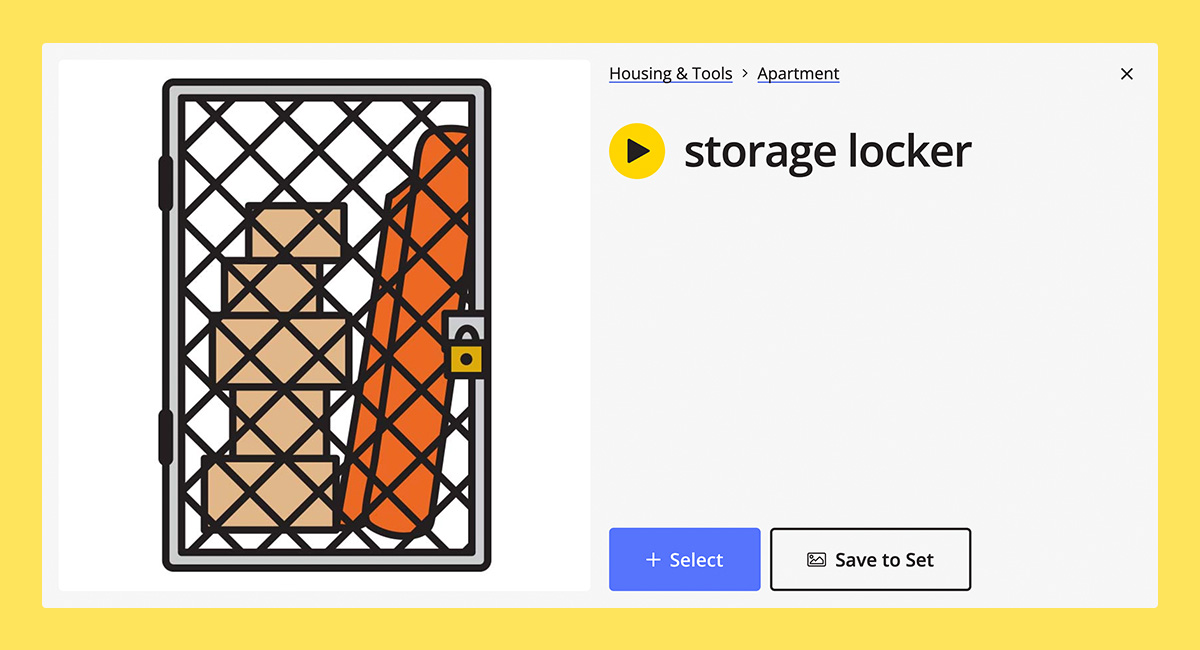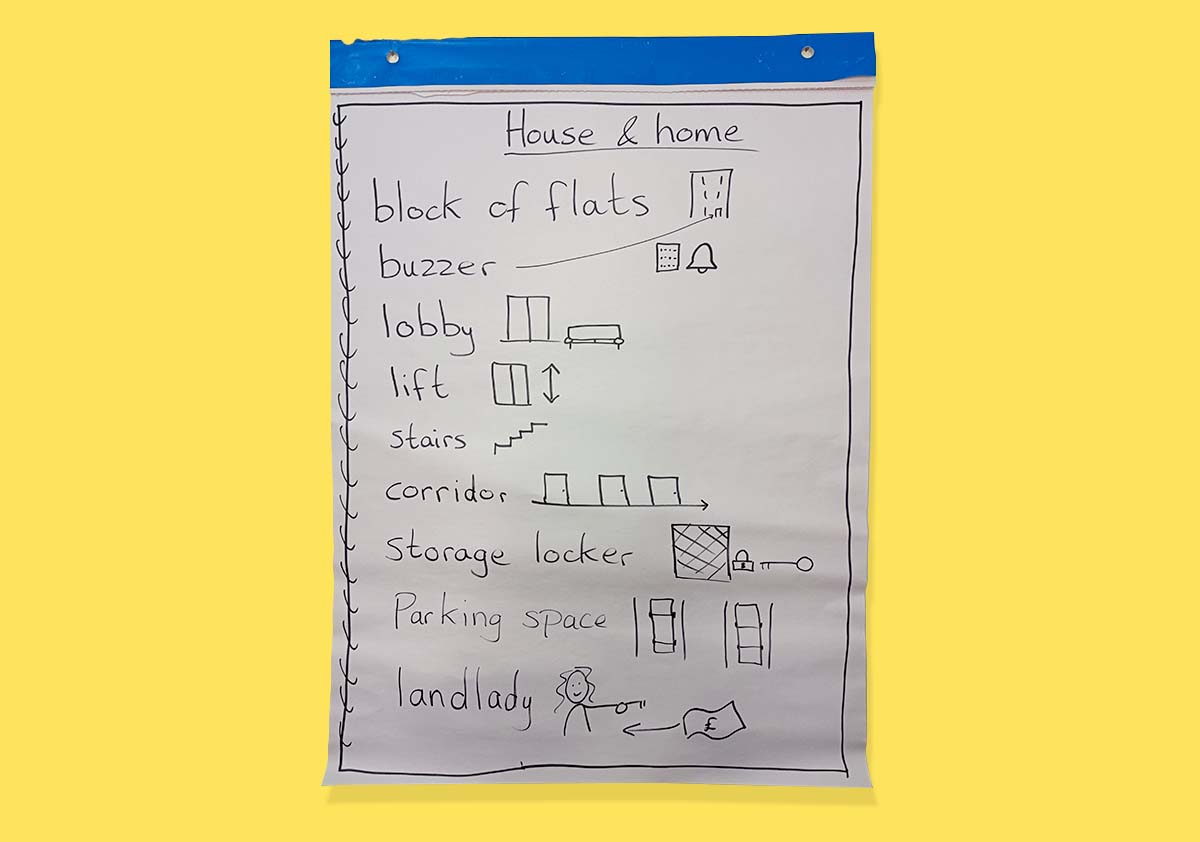Share this post
Flashcards are fantastic. They are one of the most flexible and learner-centered tools for teachers.
So many lexical items and language points can easily be represented by a simple visual.
They can be used to introduce or review vocabulary and grammar, as part of a game or activity, or to get your students talking.
You can also rely on them to be there for you when you've run out of prep time!
Before we dive into my top three flashcard tips, here's a reminder on how to use flashcards on the ESL Library platform. (If you're already familiar with their Flashcards feature, feel free to go straight to the tips.)
- Log in to your ESL Library account.
- Go to the Flashcards page.
- Select the flashcards you want to use. There are more than 3,000 flashcards to discover! They span a range of lexical topics, so it's easy to tailor to your students' needs. You can also create and save premade or custom flashcard sets.
- Choose how you want to display them. You can print your flashcards, launch them in the platform's Flashcard Player, or use the Share Screen option if you're teaching online.
Pro-Tip
I tend to select 8–12 flashcards—some I’m sure my students already know (for their confidence), some they know but might need to review or practice spelling, some that might stimulate some interesting discussion, and some that I think will be particularly helpful.
Now that you understand how the Flashcards feature works, here are my top three tips for how to demonstrate important language points to your students using ESL Library's flashcards online and in person. No class prep required!
3 Tips for Using Flashcards with Zero Prep Work
1. Take Your Time
Taking your time with flashcards allows your students to fully experience and understand the new word.
When I first started teaching, I used to drill the flashcards and ask students to repeat the pronunciation after me.
I soon found this to be problematic.
Some students already knew the words, while others knew different words for the same item (e.g., sneakers/trainers or elevator/lift). Others just got a bit bored.
Memorizing lots of vocabulary all at once was also information overload.
This led me to a much more collaborative approach.
The purpose of language teaching is supporting our students to communicate, so it makes sense to use flashcards to stimulate conversation.
Now when I use flashcards, I’ll show the image, and instead of telling students what it is, I’ll invite them to tell me.
This can lead to some interesting discussions. And instead of rushing on to the next flashcard, we’ll pause and have a chat about it. I’ll often ask open-ended questions or practice question forms we’re working on.
These conversations give the students time to really experience the new word, helping them to recall it later.
Putting It into Practice
Last week in class we started talking about "storage lockers."
First we discussed:
- What they were
- Whether they had them in their building
- Whether they were common in other countries the students knew well
- What people might keep in them
This led to further discussion about:
- How tidy our homes are
- How much "junk" we have in our houses
- What we do with things we don’t need
All this from a beginner-level class! They got very enthusiastic about it. I now have no doubt that they’ll remember the word "storage locker."

2. Draw It Out
As a graphic facilitator, I see drawing as a superpower.
I am not an artist, but the simple icons I draw in class communicate a message. I also find that they support students’ learning, engagement, and ability to remember new vocabulary.
A 2016 study by Wammes, Meade, and Fernandes refers to the drawing effect. It found that people who drew a list of words were more likely to recall them than those who simply wrote each word.
Putting it into Practice
While I work through flashcards with my students, I like to write the new words on a whiteboard and draw a very simple icon to illustrate each one. This creates a visual reference of new vocabulary for English learners and something for them to copy into their notebooks.
Students can choose to copy the simple icon, write the translation in their own language, or both.
I tend to find that my drawings are accessible and non-intimidating, so most students enjoy copying them.
You’ll notice that these icons (see illustration below) consist mostly of lines, squares, rectangles, and circles—shapes most people feel confident about replicating.

3. Focus on Pronunciation & Spelling
The more time students spend interacting with a word, the more time it has to settle into their memories.
I like to show students how to write the word and assist them to notice any spelling and pronunciation features.
Putting It into Practice
Here's a quick example of how I used pronunciation and spelling techniques with flashcards.
In ESL Library's Apartment flashcard set, we discussed the double letters in "buzzer," "lobby," and "corridor." We also discussed the /k/ sound in "block" and "locker" and made a list of other words they knew with that sound and spelling (e.g., "clock," "black," "sock," etc.).
We then added these lists to their notebooks for reference.
Getting students to notice common spellings helps them to decode the notoriously tricky sounds of the English language.
Which of these flashcard tips are you looking forward to trying out with your class? What are some of the tricks you use to demonstrate important language points to your students? Share them with us in the comments below!
Related
Comments
There are no comments on this post. Start the conversation!

